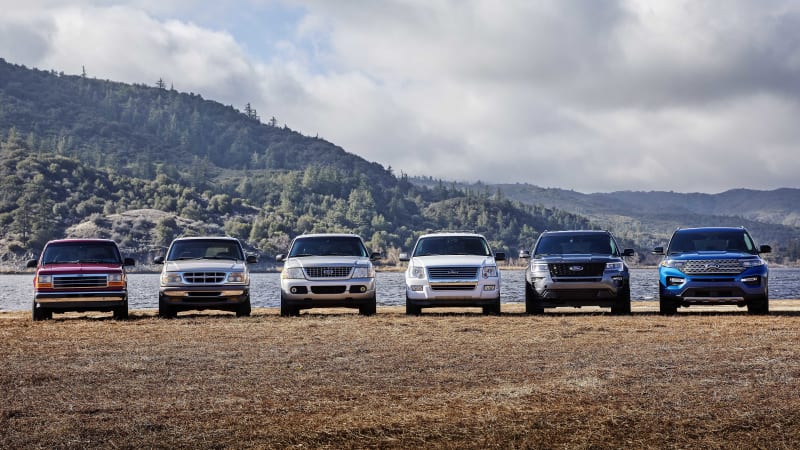Audi Repair Shop Doylestown
Call 267 279 9477 to schedule a appointment

has introduced the completely redesigned 2020
, marking nearly 30 years on the market for the family SUV. So we thought we’d look at how the Explorer has evolved since the original 1991 model hit
lots. Unsurprisingly, a lot changed in almost three decades.
First generation
That original Explorer was very much a traditional SUV with a body-on-frame chassis and either rear-drive or a four-wheel-drive system with a low range. Power came from just one engine, a 4.0-liter V6. It had classic SUV design, too, with sharp corners and unwaveringly straight lines on both the two-door and four-door variants, each with just two rows of seats.
Second generation
Those lines softened with the second-generation Explorer, released for the 1995 model year. It was similar to the previous model, but the corners were rounded, particularly at the front. The 4.0-liter V6 was still the standard engine, but a 5.0-liter V8 became an option. This generation also added a full-time all-wheel-drive system as an option for those who wanted all-weather traction without the hassle of changing drive wheels manually.
Third generation
Big changes for the Explorer came in 2001 and 2002. In 2001, the two-door
got a chunkier-looking refresh, but it only lasted until 2003. The Sport’s fascia was shared with the new
that gave Ford an entry into the growing four-door small-to-midsize truck category. It had somewhat unusual styling with exaggerated fenders, angular taillights and exposed bed tie-down hooks along the bedrails. Each was still offered with a 4.0-liter V6. The main four-door Explorer was then completely redesigned for the 2002 model year. It was much larger and could now be optioned with a third-row seat. While it remained a body-on-frame SUV with the same drive wheels, it
its solid rear axle for an independent rear suspension. The 5.0-liter V8 also went away in favor of a 4.6-liter unit.
Fourth generation
The fourth-generation Explorer, introduced for the 2006 model year, was a refresh of the existing model. The front fascia was thoroughly redesigned, and looked a little more like the old Explorer Sport and Sport Trac. The main upgrade was a more powerful V8 with the three-valve
cylinder heads. The Sport Trac went on hiatus for the year, and returned completely redesigned for 2007 with the four-door Explorer’s front fascia and larger interior. It also adopted the independent rear suspension and optional V8. This was the Sport Trac’s final generation.
Fifth generation
Arguably the biggest change to the Explorer came with the fifth generation for 2011. This was when the Explorer truly became a
, as it shared its unibody chassis and front-wheel-drive-based powertrains with the
. Included were a variety of V6 and inline-four engines, one of which would be the same turbocharged 3.5-liter, 365-horsepower V6 from the
SHO. Its grounded, rounded shape was also more modern car than old-school SUV.
Sixth generation
Then we come to the all-new Explorer for 2020. It’s still a unibody crossover, but it now comes with either rear drive or all-wheel drive. Four- and six-cylinder engines return again, along with a
powertrain. This generation will even have a sporty ST variant. Check out
all the details on the new Explorer
, and stay tuned for more info on the hybrid and ST.
Related Video:
from Autoblog http://bit.ly/2VE9yCN
